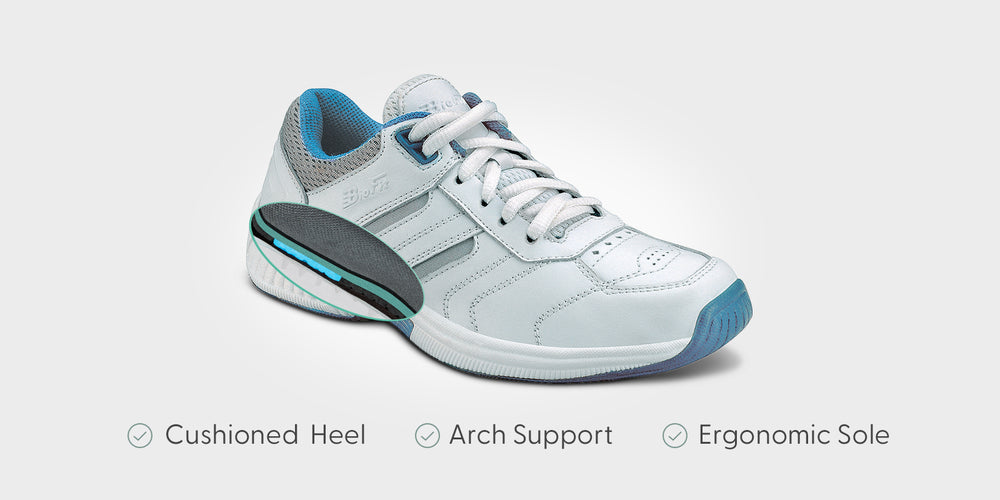Relief and Comfort for Every Step
Orthofeet’s shoes for Morton’s neuroma are designed to alleviate pain and discomfort in the ball of the foot, providing targeted support and advanced cushioning. Morton’s neuroma, characterized by irritation or thickening of the nerve between the toes, can cause sharp pain, tingling, or numbness. Orthofeet addresses these challenges with men's and women's footwear engineered to reduce pressure, improve foot alignment, and enhance mobility, helping you stay active and pain-free.
Why Choose Orthofeet Shoes for Morton’s Neuroma?
Orthofeet offers therapeutic footwear tailored to relieve the symptoms of Morton’s neuroma. Here’s why they’re a great choice:
- Pressure-Free Fit: Spacious toe boxes and extra depth reduce friction and pressure on sensitive areas.
- Cushioned Comfort: Advanced padding absorbs impact and alleviates pain in the forefoot.
- Supportive Arch Design: Built-in orthotic insoles promote proper alignment, reducing stress on the nerve and surrounding areas.
- Soft, Seam-Free Interiors: Gentle materials minimize irritation, making these shoes ideal for sensitive feet.
- Stylish and Functional: Orthofeet combines modern designs with therapeutic benefits for all-day comfort.
Key Features
- Orthotic Insoles with Arch Support: Enhance alignment to reduce nerve irritation and improve foot function.
- Shock-Absorbing Soles: Lightweight soles cushion every step, minimizing strain on the feet and lower body.
- Wide Toe Box and Extra Depth: Provides room for natural toe movement, preventing pressure on sensitive nerves.
- Stretchable Uppers: Adjust to the shape of your feet, offering a custom fit that accommodates swelling or discomfort.
- Slip-Resistant Outsoles: Ensure stability on various surfaces, allowing you to move confidently.
Benefits Designed for Morton’s Neuroma Relief
- Alleviate Forefoot Pain: Targeted cushioning and support reduce discomfort and improve mobility.
- Enhanced Stability and Comfort: Ergonomic designs provide balance and reduce fatigue during long hours of wear.
- Versatile and Stylish Options: Suitable for work, casual outings, or relaxation, Orthofeet shoes blend style with therapeutic benefits.
Ideal for Your Everyday Needs
Orthofeet’s Morton’s neuroma shoes are perfect for a variety of activities:
- Active Days: Stay comfortable and supported during work, errands, or light exercise.
- Relaxation and Recovery: Enjoy soothing relief while unwinding at home or recovering from strain.
Take the first step toward relief with Orthofeet’s shoes for Morton’s neuroma. Experience footwear designed to ease your pain and support your lifestyle.
Shop the collection today and feel the Orthofeet difference!

